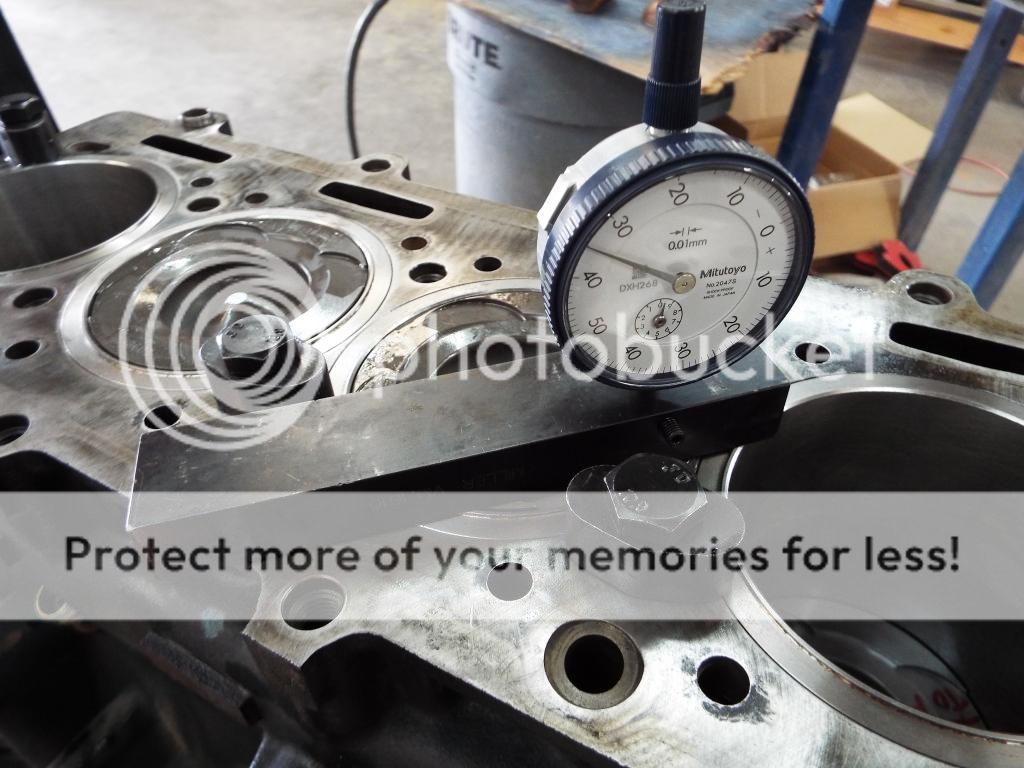flash7210 wrote:
1. The liners have a lip that is higher than the surface of the block.
2. The head gasket does not seal over the top of that lip, just the rim outside the lip.
3. The piston does not travel any higher than the height of the liner. If the piston head protrudes higher than that lip of the liner, the liners are pressed in too deep.
2. The head gasket does not seal over the top of that lip, just the rim outside the lip.
3. The piston does not travel any higher than the height of the liner. If the piston head protrudes higher than that lip of the liner, the liners are pressed in too deep.
The piston protrusion measurement is taken from the block surface, and doesn't involve the liners at all.
Measuring Cylinder Liner Protrusion:

Measuring Piston Protrusion. The dial gauge is set to zero at the deck height.

You're correct that the piston doesn't protrude past the lip of the liners, but they do protrude past the block.